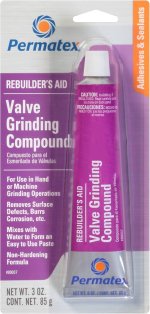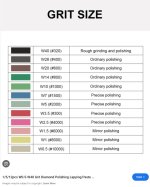You are convinced that lapping valves does no good? Then why has it been an industry standard since the first valve engines came into production? Can the whole industry be wrong?
Why is silicon carbide lapping compound used if it does not work?
Not the whole industry....just the gullible part of the industry. Let's take Permatex 80037 as an example. This material is your silicon carbide in 4 mixed grits... 120, 150, 180, and 220. Ostensibly the grit size decreases as the paste is ground between the face and the seat...or so Permatex says. Where does that reduced grit go? Some embeds into the face of the valve and seat because it is way harder than the metal you're trying to remove. That would introduce annular rings in the seat and face because it's grinding, not polishing. You want to polish you better go to 2400 as a minimum. Most of your so-called "lapping" pastes aren't .
Now you have ground away material that is between the face and the seat but only at the contact point...exactly the wrong thing to do. They are not flat nor orthoganal any more. As stated previously, that may get you a few more hours but is that your goal...to get just a few more hours. You've already gotten hundreds of hours from that engine and it wasn't just a few hours at a time, it was continuous, unrepaired hours.
I'm saying, lapping, as a means to correct deficiencies, is a waste of time. There is no way you can control the angular interface and the contact surface by "lapping" alone. A stone, cut to the proper angle, is the only way to properly restore that angle.



